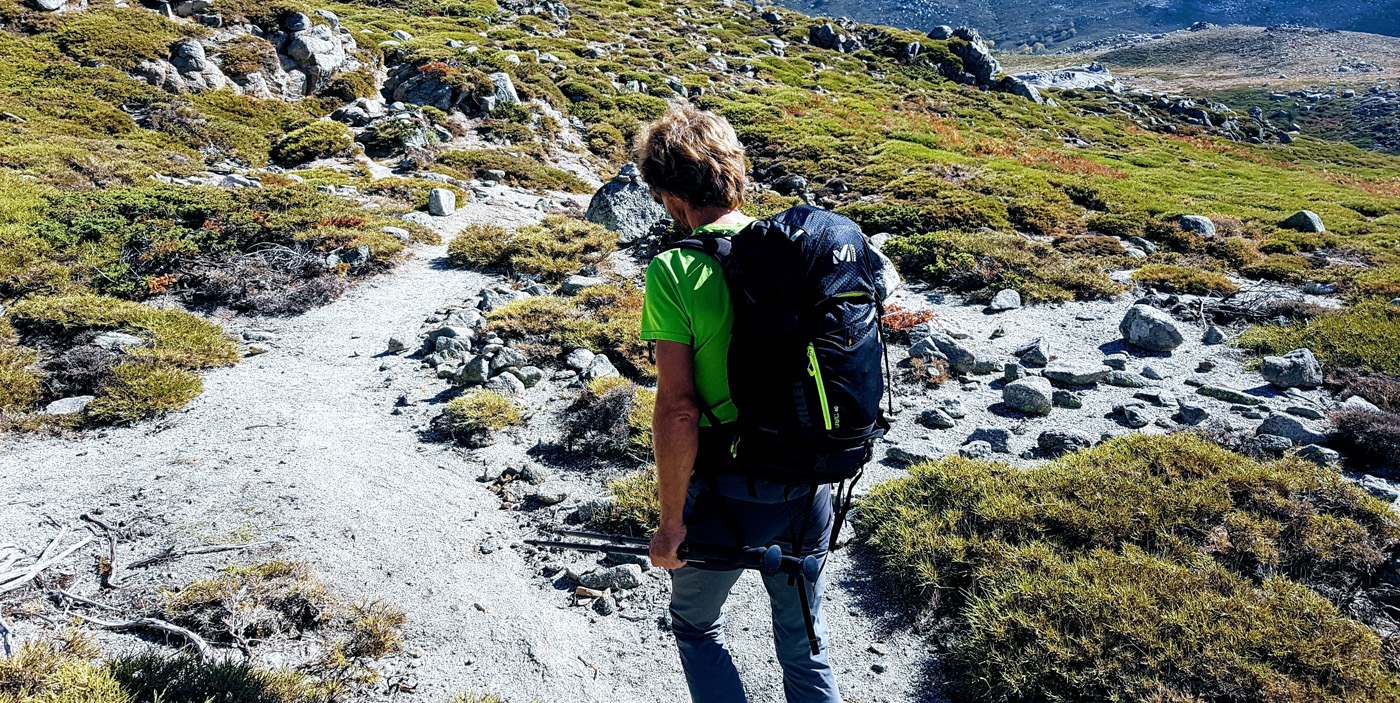
Which rucksack should I use for the GR20?
The choice of rucksack for the GR20 depends on a number of factors, such as the length of your trek, the level of autonomy envisaged, and your personal needs in terms of equipment and comfort. Here are a few tips to help you prepare for your GR20 and choose the right rucksack.
Capacity: finding the perfect balance between too big and too small
For a hiking rucksack, choose the right size. A bag that's too big can encourage unnecessary overloading, while one that's too small can limit the transport of essentials. For hikes lasting a few hours, a 10-30 litre bag is sufficient for water, a jacket and snacks. For a day in the mountains, opt for a 20 to 40-litre bag for water, a picnic, extra clothes, a camera and sun protection. If you're carrying things for your children, opt for a bigger bag, but make sure their own bag doesn't exceed 10-15% of their weight.
- For a GR20 with bag : for a complete crossing of the GR20, which generally lasts around 15 days, a 60-70 litre bag is recommended. This will allow you to carry all the equipment you need without being overcrowded. You'll need to take with you everything you need to sleep, change and wash. You should expect to weigh between 10 and 12 kg.
- For a GR20 with luggage assistance : logistics give you access to a piece of luggage several times during the crossing. This means you can stock up on a change of clothes and lighten up on unnecessary items. You'll need a 50-60 litre rucksack. It should weigh between 8 and 10 kg.
- For a GR20 without a rucksack : all you need to carry is your equipment for the day, your rucksack, water and your picnic. A rucksack of 30 to 40 litres for a total pack weight of between 4 and 6 kg.
Focus on comfort and adjustment
For optimum comfort when hiking (GR20 or other), choose a lightweight rucksack that does not exceed 25% of your body weight. Make sure it is adapted to your body shape, with specific models for men and women. Belly straps, chest straps and load return straps are essential for good balance and effective load distribution. Finally, opt for a suitable frame: stretched mesh for lightness and ventilation on short hikes, or padded foam for better support on long hikes with heavy loads.
- Check that the shoulder straps and hip belt are padded : a pack with well-padded shoulder straps and hip belt will distribute the weight better on your shoulders and hips, making the ride more comfortable.
- Choosing with an adjustable back system : a bag with an adjustable back system will allow you to adjust the bag to your body size and shape, which is crucial for comfort over long distances.
Access and organisation
The practicality of a hiking rucksack depends on your organisation and the equipment you are carrying. Choose between models with central or side openings for quick access. Internal compartments are useful for separating items, and external mesh pockets are handy for quick access to certain equipment, such as your camera.
- Pockets and compartments: look for a bag with several pockets and compartments for easy organisation of your gear, food and clothes.
- Easy access: a bag with top and bottom or front access can be very useful for quick access to your gear without having to unpack everything.

Pascal
Accompagnateur en montagne
Le sac à dos idéal pour le GR20 devrait être confortable, ajustable, suffisamment grand pour transporter tout votre équipement, mais aussi organisé et durable. Il est conseillé d'essayer plusieurs sacs avec du poids à l'intérieur pour trouver celui qui convient le mieux à votre morphologie et à vos besoins.
Caractéristiques spécifiques
- Points d'attache extérieurs : pour le matériel supplémentaire comme les bâtons de randonnée ou le matériel de couchage.
- Système d'hydratation : un sac compatible avec un système d'hydratation vous permettra de boire facilement sans avoir à vous arrêter pour sortir une gourde d'eau.
Durabilité et résistance aux intempéries
Peu importe la saison, votre sac à dos de randonnée sera exposé à l'humidité, qu'il s'agisse de la rosé lors d’un passage dans le brouillard ou des chutes de pluie lors d’un orage. Optez pour un sac avec un tissu hydrofuge, c'est-à-dire légèrement imperméable, pour éviter que le contenu de votre sac ne devienne humide. Idéalement, assurez-vous que votre sac à dos possède une housse de pluie intégrée ou envisagez d'en acquérir une séparément.
- Choisir des matériaux robustes : choisissez un sac fabriqué dans un matériau résistant à l'usure et aux déchirures.
- Vérifier l'imperméabilité : bien que la plupart des sacs ne soient pas entièrement imperméables, un sac avec un revêtement résistant à l'eau ou une housse de pluie incluse est essentiel pour garder vos affaires au sec.
Poids du sac
- Léger mais solide : un sac léger réduira la charge totale, mais ne sacrifiez pas la robustesse pour le poids. Un sac trop fragile ne résistera pas aux rigueurs du GR20.




